Titanic Full Movie Anyalsis And its review in 2025 Latest Updates
Introduction
In the history of cinema, certain films transcend the boundaries of entertainment and become cultural phenomena. James Cameron’s “Titanic” (1997) is one such film. Released on December 19, 1997, this epic romantic drama captivated audiences across the globe, earning a place not only in box office history but also in the hearts of millions. Its unique combination of a sweeping love story and one of history’s most infamous disasters created a cinematic experience unlike anything that came before.
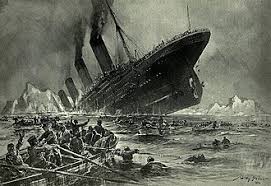
With over $2.2 billion in box office earnings, Titanic became the highest-grossing film of all time for more than a decade. It won 11 Academy Awards, including Best Picture and Best Director, and remains one of the most beloved films ever made. But beyond the numbers lies a deeper story—about love, sacrifice, human arrogance, and tragedy.
The Historical Context of Titanic
The RMS Titanic was not just a ship; it was a symbol of early 20th-century ambition, luxury, and technological progress. Built by the White Star Line, the Titanic was considered the largest and most luxurious passenger liner of its time. Many believed it was “unsinkable,” an engineering marvel that embodied human confidence at the dawn of a new century.
However, tragedy struck on April 15, 1912, when the ship collided with an iceberg during its maiden voyage from Southampton to New York City. Of the more than 2,200 passengers and crew aboard, over 1,500 perished in the freezing waters of the North Atlantic. The disaster shocked the world, exposing flaws in maritime safety regulations and human hubris.
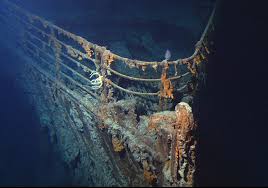
James Cameron used this real tragedy as the backdrop for a fictional love story, weaving historical authenticity with human drama.
Storyline and Themes
The Love Story of Jack and Rose
At the heart of the movie lies the romance between Jack Dawson (Leonardo DiCaprio) and Rose DeWitt Bukater (Kate Winslet). Jack is a poor artist who wins a third-class ticket onto the Titanic through a poker game. Rose, in contrast, is a first-class passenger trapped in a life she does not want, engaged to wealthy steel magnate Cal Hockley.
When Rose contemplates ending her life due to the pressure of her constrained world, Jack saves her, setting off a love affair that defies social expectations. Their romance unfolds across breathtaking settings—the grand staircase, the lavish dining halls, the windy decks, and the cramped lower-class quarters.
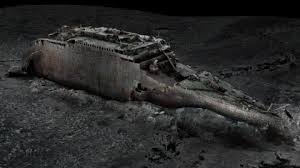
This love story is not just about two people; it symbolizes freedom, rebellion, and the human spirit’s ability to transcend boundaries.
Key Themes
Class Divide: The stark difference between the privileged first-class passengers and the struggling third-class immigrants reflects the inequalities of the early 1900s.
Love vs. Duty: Rose must choose between living a life of wealth and status with Cal or pursuing true love and freedom with Jack.
Fate and Tragedy: The Titanic was heralded as unsinkable, but nature proved otherwise, highlighting the arrogance of human pride.
Survival and Sacrifice: The sinking scenes illustrate heroism, selfishness, fear, and bravery, showcasing the best and worst of humanity.
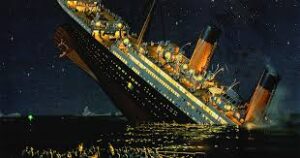
Scene-by-Scene Breakdown
Boarding the Titanic
The film begins with treasure hunter Brock Lovett searching the Titanic’s wreck for the “Heart of the Ocean” diamond. His expedition leads him to Rose, now elderly, who recounts her story of the ill-fated voyage.
The audience is then transported back to 1912 as the Titanic departs Southampton. The ship is introduced in all its grandeur, with sweeping shots that emphasize its massive size and opulence.
Jack and Rose’s First Encounter
Jack sees Rose on the deck, unhappy and contemplating suicide. When she climbs over the railing, he convinces her not to jump, saving her life. This moment forges a connection between them, despite the disapproval of Cal and Rose’s mother.
The Blossoming Romance
Their romance develops through shared moments: Jack showing Rose his sketches, the famous “I’m flying” scene at the bow of the ship, and the intimate drawing scene where Rose poses for Jack. These sequences balance tenderness with rebellion, as Rose breaks free from societal constraints.

The Sinking Begins
Disaster strikes when the ship collides with an iceberg. Initially, passengers are reassured that everything is fine, but panic sets in as the reality of the situation becomes clear. The lack of lifeboats and the chaos of evacuation reveal the inequality between classes.
The Tragic Climax
Jack and Rose fight for survival amid the chaos. Jack helps Rose escape Cal’s pursuit and encourages her to stay strong. Ultimately, Jack sacrifices himself in the freezing waters so that Rose can survive.
The Emotional Ending
Rose is rescued and assumes a new identity, living her life with the spirit of freedom Jack inspired in her. In the film’s final moments, an elderly Rose recalls her journey and finally lets go of the Heart of the Ocean, symbolizing closure.
The Characters
Jack Dawson
Jack’s character represents freedom, hope, and resilience. His artistic spirit and adventurous nature contrast sharply with the rigid world of wealth and status. DiCaprio’s performance turned Jack into a cinematic icon.
Rose DeWitt Bukater
Rose embodies the struggle for independence. Her transformation from a confined young woman to a strong survivor makes her one of the most compelling heroines in film. Kate Winslet’s portrayal captured both fragility and strength.
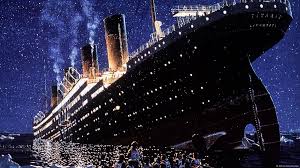
Cal Hockley
Cal serves as the antagonist, embodying control, greed, and entitlement. His obsession with Rose highlights the darker side of wealth and power.
Supporting Figures
Molly Brown: A symbol of compassion and resilience, offering support to Rose.
Captain Smith: A tragic figure caught between duty and the inevitability of disaster.
Spicer Lovejoy: Cal’s enforcer, representing suspicion and hostility.
Behind the Scenes – The Making of Titanic
James Cameron’s vision for Titanic was groundbreaking. Determined to bring authenticity, he conducted over a dozen dives to the actual wreck. He built a nearly full-scale replica of the ship in Mexico, spending around $200 million—a record budget at the time.
The production faced numerous challenges: water tanks, dangerous stunts, extended shooting schedules, and skepticism about its cost. Yet Cameron’s attention to detail paid off, with interiors recreated to perfection, costumes designed with historical accuracy, and special effects that seamlessly blended models, CGI, and practical sets.
Cinematography and Visual Storytelling
Russell Carpenter’s cinematography captured both grandeur and intimacy. Wide shots of the Titanic emphasized its scale, while close-ups during Jack and Rose’s tender moments brought emotional depth. The sinking sequence was a technical marvel, combining real sets tilted into water with CGI enhancements.
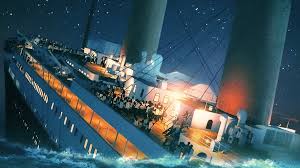
The Iconic Music
James Horner’s score elevated the film to legendary status. The emotional power of Celine Dion’s “My Heart Will Go On” became inseparable from the movie. The song topped charts worldwide and won the Academy Award for Best Original Song.
Box Office and Awards
Worldwide Gross: $2.2 billion
Academy Awards: 11 wins (including Best Picture and Best Director)
Golden Globes: 4 wins
Countless other awards and nominations solidified its place as one of the greatest films ever made.
Audience Reactions Around the World
In the U.S., Titanic became a cultural obsession, with repeat viewings fueling its box office success.
In Asia, particularly in China and Japan, the film became a phenomenon, with audiences deeply connecting to the love story.
In Europe, the film sparked renewed interest in Titanic history, with museums and exhibitions seeing record attendance.
Symbolism and Metaphors
The Ship: Symbolizes human ambition and arrogance.
The Heart of the Ocean Diamond: Represents wealth, love, and ultimately, loss.
The Ocean: A metaphor for fate, eternity, and the unknown.
Jack’s Sacrifice: The ultimate symbol of love and selflessness.
Legacy and Influence
Redefined blockbuster filmmaking by combining epic spectacle with emotional depth.
Sparked new interest in Titanic history, leading to documentaries, books, and exhibitions.
Cemented Leonardo DiCaprio and Kate Winslet as global stars.
Inspired countless parodies, tributes, and cultural references.
Its re-releases in 3D and IMAX continue to draw new generations of fans.
Conclusion
James Cameron’s Titanic is more than just a movie—it is a cultural milestone. Its combination of romance, tragedy, historical detail, and technical brilliance makes it timeless. Decades after its release, it continues to resonate with audiences, reminding us of the fragility of life, the power of love, and the dangers of human arrogance.
With unforgettable performances, stunning visuals, and one of the greatest soundtracks ever created, Titanic remains a cinematic masterpiece that ensures its legacy will live on for generations to come.
Frequently Asked Questions (FAQs) about Titanic (1997)
1. What is the movie Titanic about?
Titanic tells the fictional love story of Jack Dawson and Rose DeWitt Bukater, two passengers from different social classes, set against the backdrop of the real-life sinking of the RMS Titanic in 1912.
2. Is Titanic based on a true story?
Yes and no. The sinking of the Titanic is a historical event, and many characters, settings, and details in the film are historically accurate. However, the romance between Jack and Rose is fictional.
3. Who directed Titanic?
The movie was directed, written, and produced by James Cameron, who is also known for directing Avatar, The Terminator, and Aliens.
4. Who are the main actors in Titanic?
The lead roles are played by Leonardo DiCaprio (Jack Dawson) and Kate Winslet (Rose DeWitt Bukater). Supporting roles include Billy Zane, Kathy Bates, Frances Fisher, and Bill Paxton.
5. How much did it cost to make Titanic?
The film’s production budget was around $200 million, making it the most expensive film ever made at the time of its release in 1997.
6. How successful was Titanic at the box office?
Titanic grossed over $2.2 billion worldwide, becoming the highest-grossing film of all time until it was surpassed by James Cameron’s Avatar in 2009.
7. Did Titanic win any Academy Awards?
Yes, Titanic won 11 Oscars, including Best Picture and Best Director. It tied the record for the most Academy Awards ever won by a single film.
8. What song is featured in Titanic?
The iconic theme song is “My Heart Will Go On” performed by Celine Dion. It became one of the most successful film songs of all time.
9. Why did Jack die in Titanic?
Jack sacrificed his life so Rose could survive by staying on the floating debris after the ship sank. Director James Cameron has stated that Jack’s death was essential to the story’s emotional impact.
10. Is the “Heart of the Ocean” diamond real?
No, the Heart of the Ocean is fictional. It was created for the film, though it was inspired by real diamonds such as the Hope Diamond.
11. Where was Titanic filmed?
Much of the film was shot in a massive water tank in Baja California, Mexico, where a near full-scale replica of the ship was constructed.
12. Why is Titanic considered one of the greatest films ever?
Its combination of romance, historical drama, groundbreaking visual effects, memorable performances, and cultural impact have cemented Titanic as a timeless masterpiece.
